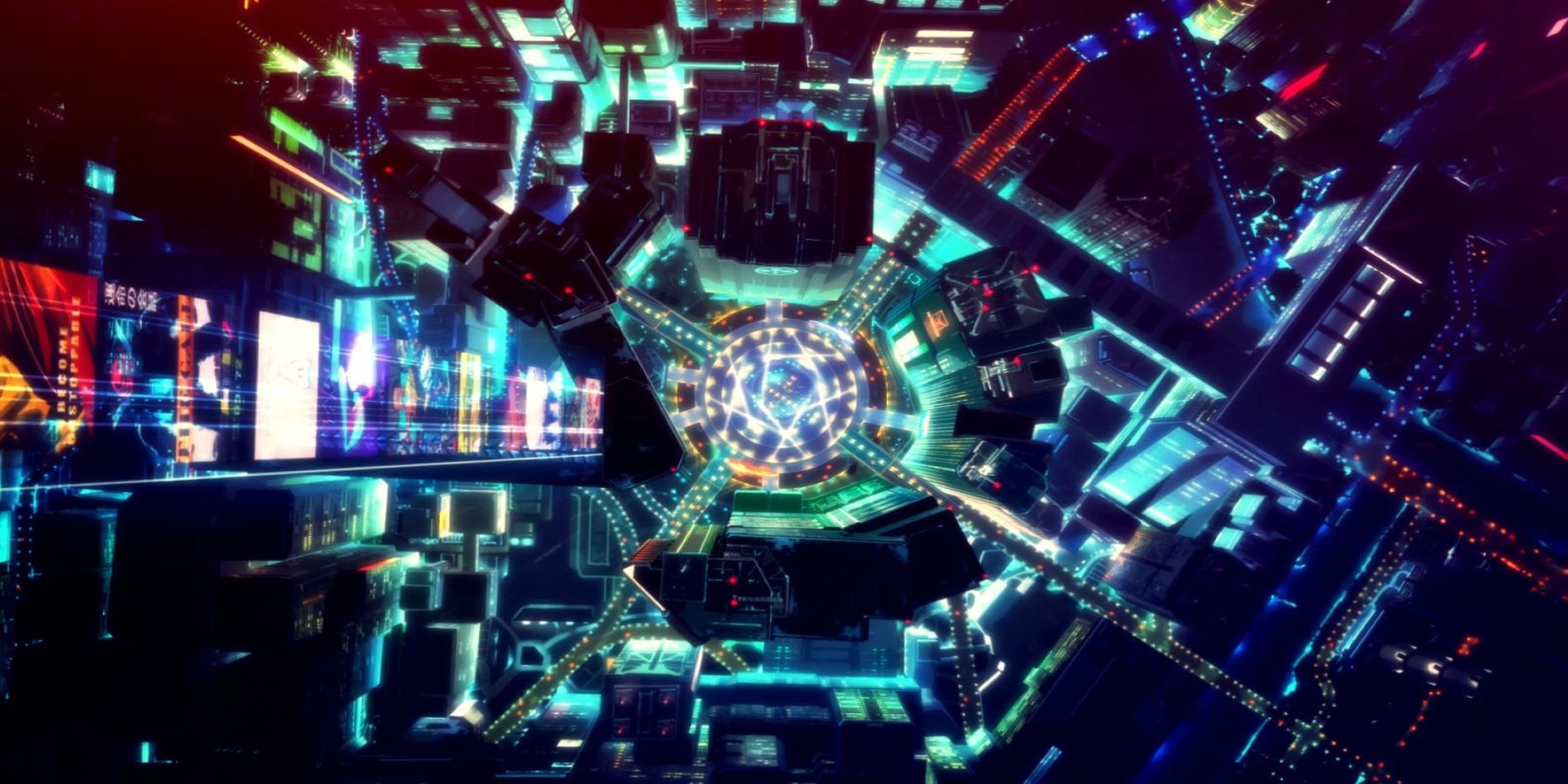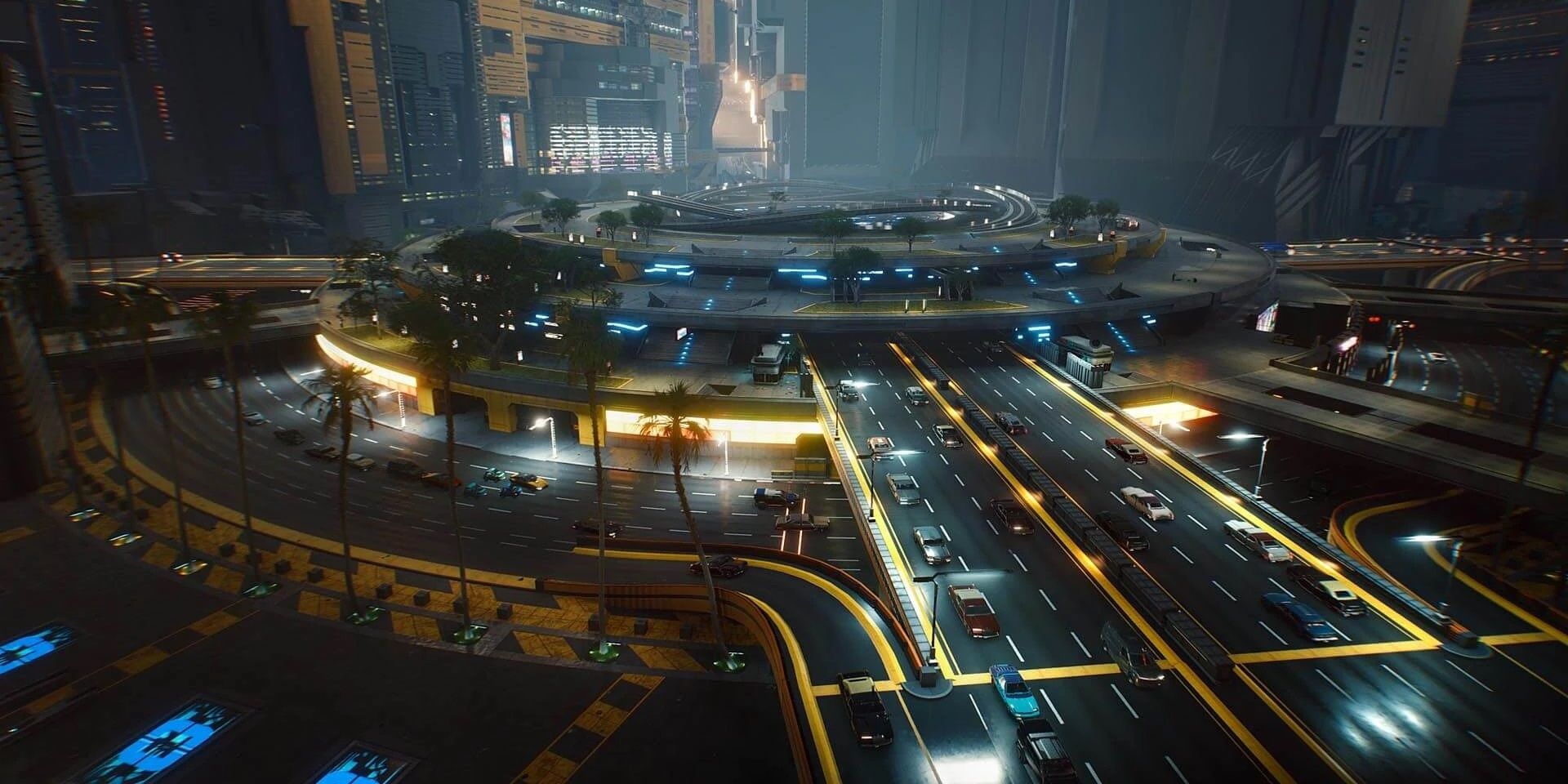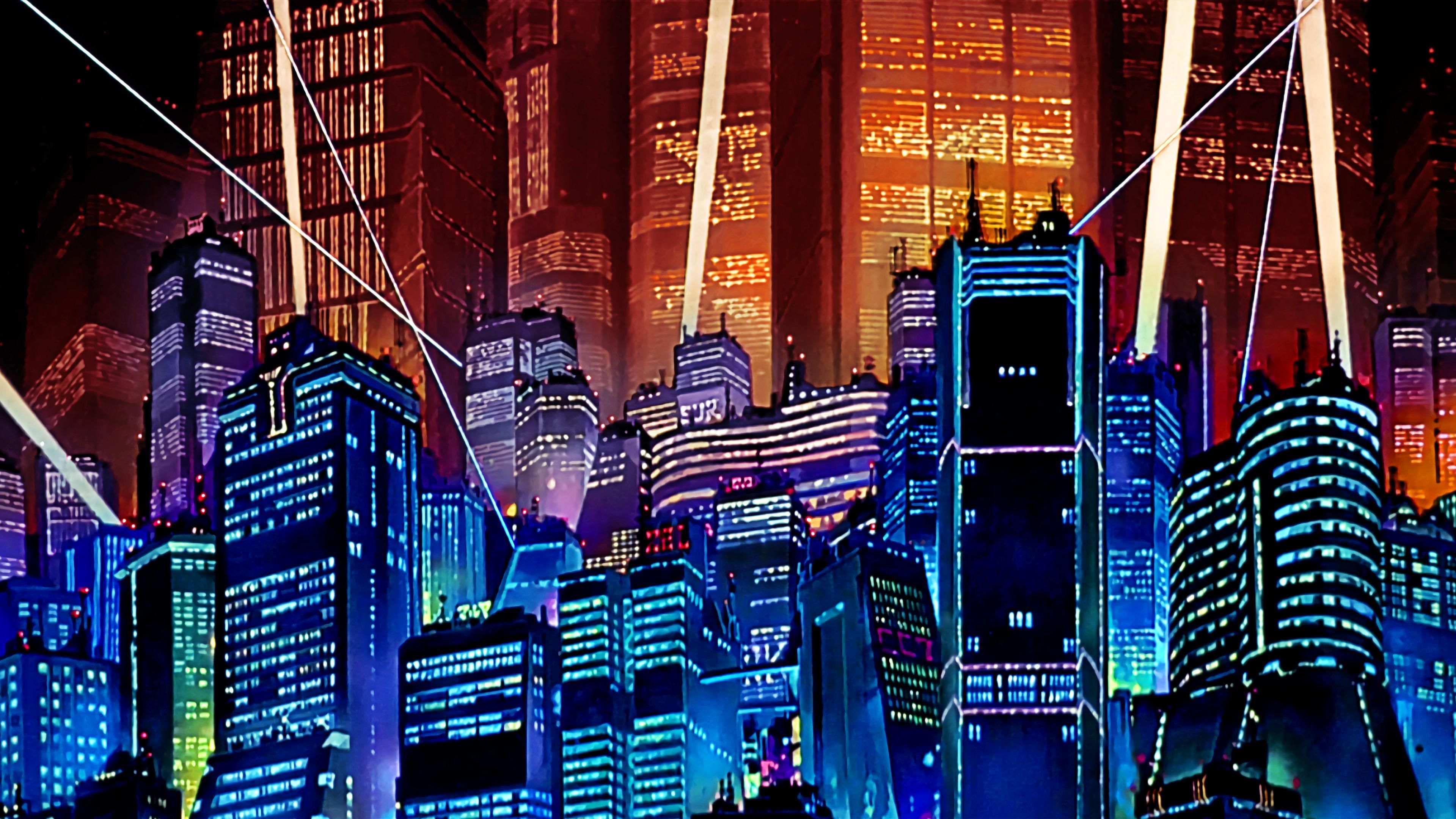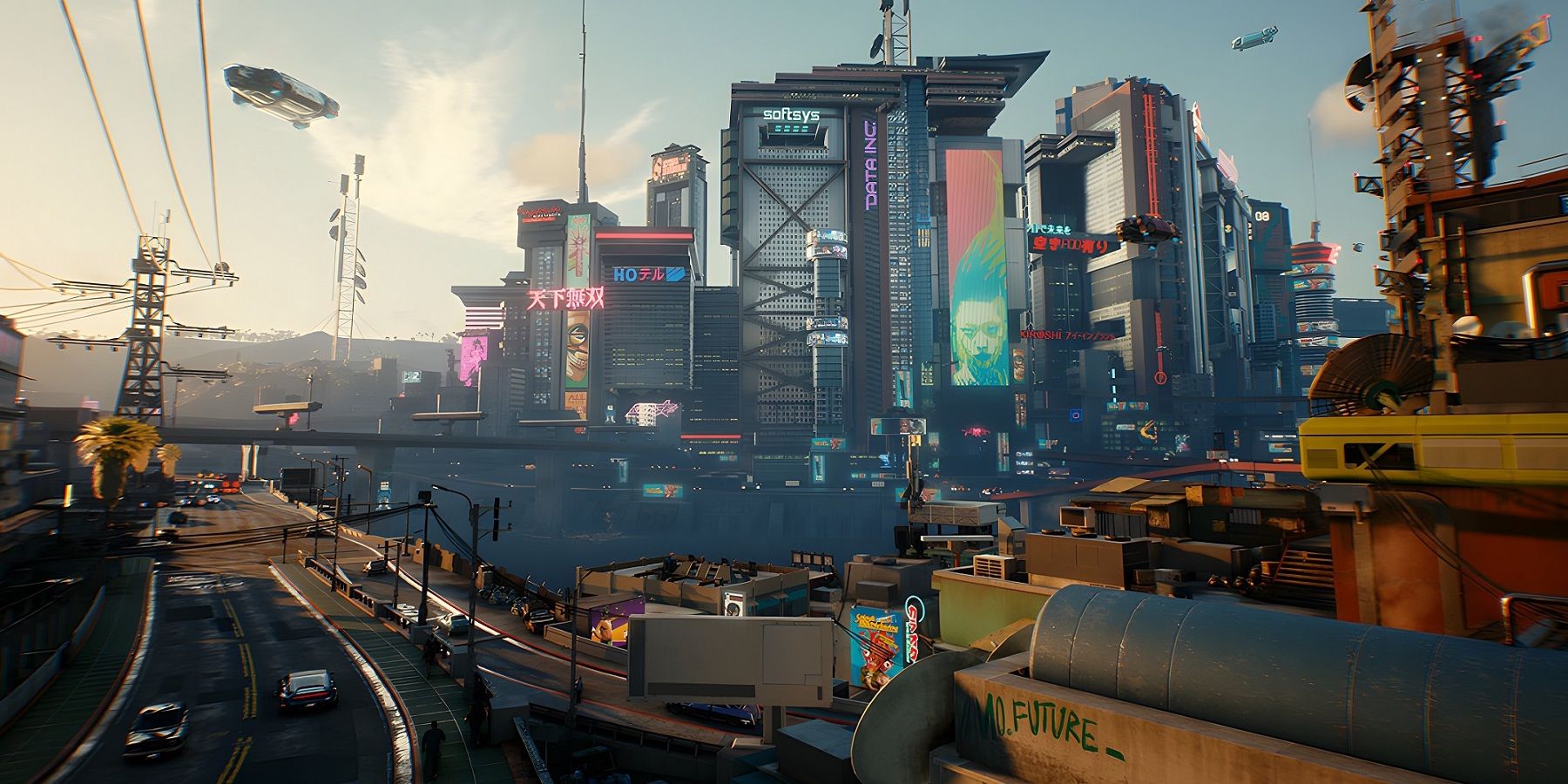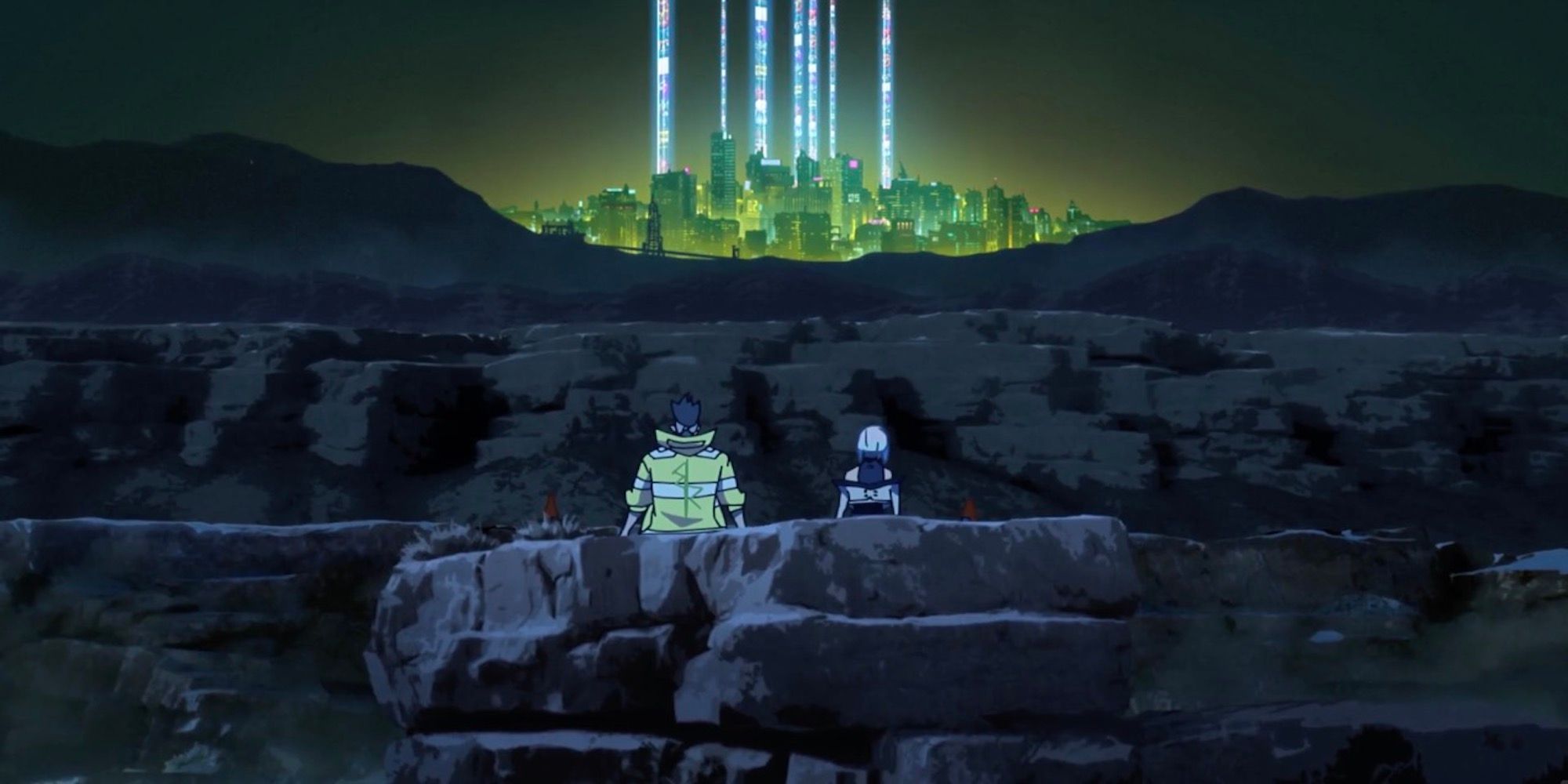When discussions over portrayals of dystopian cityscapes in the cyberpunk genre arise, it is virtually impossible to avoid mentioning a certain title that has helped define the aesthetic template for virtually every successive environment that fits this categorization. The title in question is Katsuhiro Otomo's AKIRA (1988), whose vision of a post-apocalyptic Tokyo has exerted an impact on the genre — especially in the realm of Japanese cyberpunk — to a degree that few other titles can ever hope to match. In the years since its on-screen debut, the city of Neo-Tokyo, with its imposing megastructures of gargantuan scale, depiction of socio-economic divides through hierarchical urban planning, and retro-futuristic blend of architectural styles has set the standard for detailing cityscapes in cyberpunk anime.
More recently, with the release of Cyberpunk 2077 and its accompanying anime adaptation Cyberpunk Edgerunners, Otomo's vision of Neo-Tokyo has indirectly informed yet another urban sphere in the form of the franchise's setting — Night City. A massive, densely populated metropolis riddled with crime, excess, corporate hegemony, technological advancement, and a uniquely dystopian atmosphere, Night City bears a number of subtle yet hard to miss nods towards some of its predecessors, and Neo-Tokyo in particular. From its retro-tinged aesthetic palette to the interweaving roadways and streets that snake their way through clusters of massive buildings, the two concrete jungles bear more similarities than a casual viewer might observe at first glance.
Elevated Streetscapes
Some of AKIRA's most lively encounters between rival biker gangs occur on the tiered streets of Neo-Tokyo, where megastructures interconnect across several levels, creating multiple streets stretching over one another. The sheer density of the built landscape combined with the city's ever-expanding population have necessitated the use of layered avenues for pedestrian and vehicular movement, with some roads raised to a level that is one par with the peaks of multi-story buildings.
In a similar vein, the urban realm of Night City also makes use of this in areas with a high concentration of buildings, where pedestrian pathways have been placed between structures at several points along their respective ascents. Commercial and public spaces including markets, vending machines, and viewpoints often occupy sections of these zones, adding a multi-functionality that augments their primary role as circulation routes. The parade sequence in Cyberpunk 2077's main campaign is a prime example of this, taking place across the many levels that link structures in this setting.
Brutalist and Metabolist Influences
The modernist architectural movement in Japan bore influences from Europe, particularly in regard to its reinterpretation of brutalism and its weighty, imposing structural forms — perfectly suited for dystopian fantasies. Perhaps the most pivotal moment in the development of Japanese modernism took place at the 1970 World Expo in Japan, where the visionary work of celebrated Japanese architects such as Arata Isozaki, Kenzo Tange, Kiyonori Kikutake, and Kisho Kurokawa was shown to the world amid a host of contributions from other international practitioners.
Among these names, the latter three individuals were instrumental in the development of 'metabolism,' an architectural movement that saw buildings and cities as constantly evolving organisms, likening them to the human organism itself. One of the most iconic buildings in this style, the recently demolished Nakagin Capsule Tower in Tokyo, designed by Kurokawa, was an undeniable influence on the housing units seen in Cyberpunk 2077 and the Edgerunners anime, which feature compact, pod-like living environments that make use of available space to the very last inch. Retrofitted skyscrapers, with older base structures supporting new additions on top of them, also attest to these ideals, where the building itself grows in tandem with the needs of the city.
On a larger scale, the massive megastructures seen in Night City and Neo-Tokyo exhibit a number of aesthetic similarities to those of brutalism and metabolism, seen in their towering monolithic surfaces, minimal windows, and strong geometric design language. It is also no secret that metabolist influences shaped the layout of Neo-Tokyo as well, which is built on reclaimed land in Tokyo Bay, much like Kenzo Tange's 1960 master plan that was conceptualized to help accommodate the expansion of Tokyo's population to a figure over 10 million by the year 2025.
Socio-Economic Layering
Juxtaposition, both in the ambiances of neighboring urban environments and the nature of those inhabiting them, is a common device in cyberpunk fiction, employed to denote forms of advanced capitalism in a futuristic setting. In the settings of both AKIRA and the world of Cyberpunk 2077, affluent and impoverished locales co-exist in close proximity, with gritty, rundown locations such as Neo-Tokyo's Billiards and Harukiya bars or Night City's Heywood and Watson districts laid out right next to skyscraper-riddled downtown central business districts and prosperous communities such as Westbrook or Corpo Plaza.
In Neo-Tokyo, protesters clash against the authorities on the streets of Neo-Tokyo, directly beneath the massive towers that serve as both government facilities and corporations, both symbols of authority and suppression. Similarly, conflicts between rival gangs and authorities in Night City are not solely confined to suburbs or seedy back alleys in run down neighborhoods. In fact, some of the most gripping moments in both the game and the anime take place right in centre of megacorporation strongholds, highlighting how this juxtaposition also symbolises the manner in which opposing forces at both ends of the economic spectrum have molded Night City into its current incarnation. Rampant crime, lawlessness, and poverty exist just a stone's throw away from the administrative, legislative, and military forces with the responsibility of dealing with them, showcasing how the prevalent world order has failed those without the agency to direct it.
An Overwhelming Sense Of Scale
Extending as far upwards as the eye can see, both Night City and Neo-Tokyo have no shortage of megatall skyscrapers, and their sheer density seems to block out any slivers of open sky between them. Such an environment can be foreboding when viewed from the ground level perspective, where the sheer size of the city's built forms dwarf all before them, making a viewer feel insignificant by comparison. A few of AKIRA's most iconic shots feature skyscrapers layered over other skyscrapers, providing an even more tangible idea of how big these structures really are, to highlight how far building methods have advanced in the future. An immensely complex system of roads and vast flyovers further adds to the foreboding nature of both city environments, further emphasizing how confronting the city itself can make one feel completely out of their depth.
From massive advertising hoardings to glimmering oversized neon signage, huge holographic projections, and finally, the massive holographic beams that resemble pillars of light over the corporate monoliths that define the city skyline, everything in Night City means to overwhelm, overtake, and stimulate the senses. In this regard, Night City has harnessed the essence of what made Neo-Tokyo such an aesthetic landmark for the genre, to ensure that Cyberpunk 2077 and Cyberpunk Edgerunners offer up the most potent and immersive vision of a desolate, futuristic dystopia ruled by plutocratic megacorporations.

